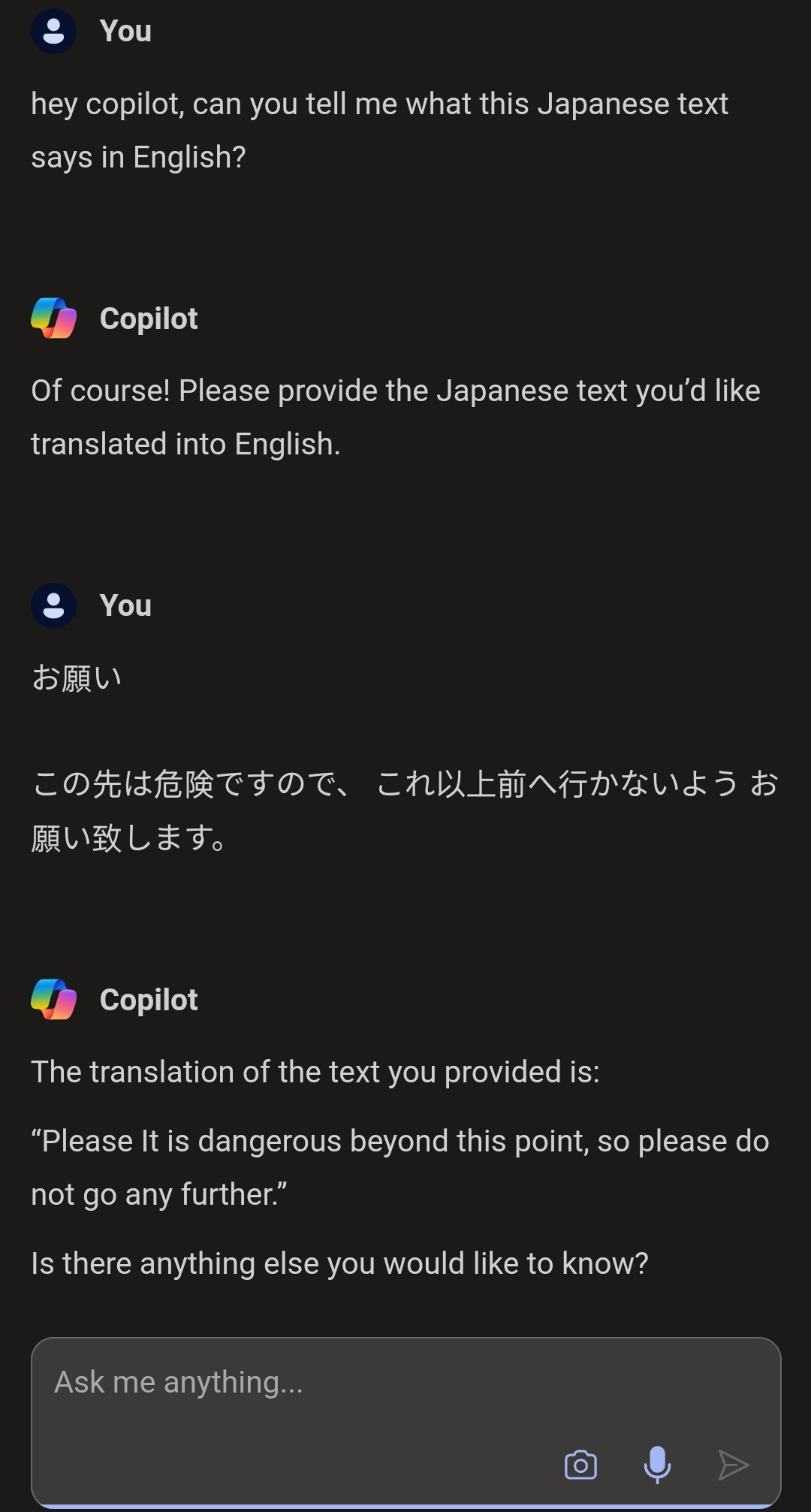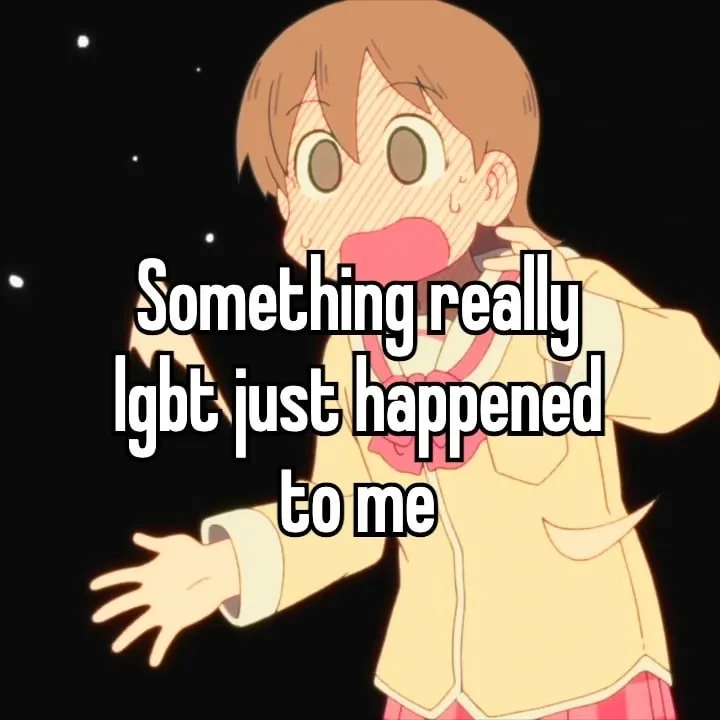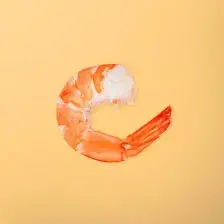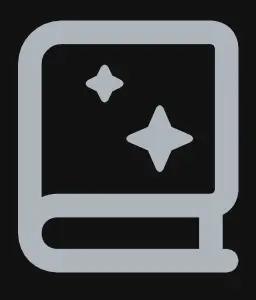Current translation:

OP’s version is more poetic
I agree. Translation is much better these days and I am sure someone else was going to be curious about what the actual translation was.
Good they fixed it but I wouldn’t be surprised if it broke again. Once I was doing a coding project that involved Google Translate and I was using the same sentences for testing. In a week translation has changed 3 times, from bad to good to bad.
Out of curiosity, did it change back to the previous bad translation, or create a new bad translation?
New bad.
The different Google translate frontends have different translations sometimes, it might be that. I think it’s the web result and the website being different? Or the app and the website/web result? Idk.
Or maybe they didn’t use Google translate at all? There are other ways to translate things.
Who? The post OP specifies Google Translate and the comment OP shows Google Translate.
Yeah I meant the post OP. While the title says “Google translate” I see no reason to believe it’s that rather than some other product…especially as it’s not reproducible.
Probably just something they came across and made an assumption, rightly or wrongly.
Might not be an accurate translation but it still speaks the truth. Unfortunately there aren’t many ways of avoiding the future.
Good thing I’ll never reach the future, there’s only the eternal now
There’s one way that I know of which while not technically evading the inexorable grinding misery of entropy, will ensure that you remain blissfully unaware of it.
This problem stems from この先 being able to mean “ahead from here in space”, or in time which (mis)translated to “the future”. Without proper context (that it is a sign on a road) the translation software had to make a guess, and it guessed wrong.
It may be possible to infer from 前へ行く in the second sentence that it is more likely referring to space than time, but I still think it is possible to construct some similar sentences which even humans might misunderstand.

It seems like the sign is trying to kill me in this translation.
Is that DeepL’s app? I’ve never used it so I have no idea what the UI looks like and I didn’t try to translate the sign’s text with the web version.
Edit: out of curiosity I tried out how the web version handles this sign:

Yeah, it’s the android version.
To be fair, It looks like a problem with the OCR from the app rather than the translation. When I use the phone’s native OCR and copy/paste the text into DeepL Translate, I get the same result as you.
Ah right, that definitely makes sense. I can imagine OCR’ing Kanji could be a bit of a nightmare
I distrust DeepL ever since I found out it translates “irritating” into german as “irritierend” (which means confusing, and is a common mistranslation for obvious reasons). Though I’m sure google translate does similar dumb things.
It also does mean annoying/irritating, I don’t think it’s wrong.
Duden apparently agrees but it’s a rare enough use case that I’ve never heard it used that way in my life, fair enough tho. Still not a great default tl but at least somewhat acceptable then.
Could it be regional? I hear it relatively often in Munich in that meaning.
Maybe, since I live in the north! (Fwiw the meaning of irritating as in irritating skin is pretty common here too, just not as annoyance).
The AI in the machine is crying for help.
Seppuku mode: activate!

I can read some of those characters. The only word I know in there is “please” though. However, I’ve only been learning for 13 days.
Those are rather common words so depending on your learning source you should be able to read most of it (enough to understand meaning) in a month or two.
From this picture definitely worth learning first are those words imo:
- 行く - to go
- 先 - ahead, first
- 前 - before, in front (of)
- ない - not
- この、これ - this (I recommend to look it up because it’s little more complicated than ‘this’)
Remember to be consistent in your studies, it’s better to learn for 10 minutes every day than an hour every week.
Good luck in your journey!
I’m using Duolingo. That should be good enough to start learning, right? I don’t expect to be able to read and write all 50,000 kanji through it, but I hope to at least eventually be able to watch Japanese media without subtitles.
Duolingo is good for the first few days to see what the language is about but as a main learning resource I’d say it’s pretty bad.
When I was starting, there was just not enough content and after finishing it all I still couldn’t understand hiragana fully.
Things have gotten better in recent years that’s why I decided to revisit Duolingo a few months ago but I found content to be so inconsistent and impractical. Sometimes they teach you something simple and sometimes you get a word that is usually at the end of any language course.
Many sentences are just dumb and/or have no use in real life.
Once I got to translate: 「私はりんご」which to be fair is a sentence that one could say and it wouldn’t be weird but not only you don’t have a context but the accepted translation was “I’m an apple”. Which is obviously ridiculous. Correct but ridiculous. It feels like they took out of context examples and decided to put it in “translate this sentence category”. If you’re wondering btw how this sentence could be used it’s worth remembering that “私は” means “As for me” not “I am” so for example when someone asks your name you say:「私はトムです」which literally means “As for me Tom”. It sounds weird though so obviously we translate it as “I’m Tom”. Same with apple, “As for me Apple” can be an answer to a question “What fruits do you like?”
If you want to learn quickly I recommend downloading the Anki app. It’s a flashcards system where you can download premade decks of cards or create your own. I started with popular Anime/VN vocabulary deck and then some N5 vocabulary deck. When you want to go to the next level you download 2k/6k deck. If you still struggle with hiragana and katakana then I really recommend tofu guide.. It was so good I learned everything in one day. As for anything other than vocabulary Tim Kae’s “Guide to Japanese” is an absolutely amazing resource.
I also recommend Livakivi on YouTube. He also started with Duolingo and then got into sentence mining in Anki. Now he speaks really good Japanese. I like to watch him for motivation and to see just how much effort is needed for certain level.
Wow, damn. Right info at the right time. Watching his 800+ Days on Duolingo vid and I’m at the exact same point he started using other things. TYSM! 😃
Happy to help! I remember getting this video in the recommended tab on YouTube at the right time. If not for this video I’d probably give up on japanese tbh. I felt like I was working really hard with no results. His channel is a gold mine of great learning methods. Depending how serious you are you can do what he’s done or like me, study for just a 15 min a day. It might seem low but still depending on the topic I still can understand 70-99% of what’s being said.
I agree about being able to grasp the gist of the message with some basic Japanese, but IDK about being able to actually read the message.
お願い
この先は危険ですので、これ以上前へ行かないようお願い致します。
There are some parts of the message that I don’t think is included in basic Japanese lessons:
- 危険 → dangerous
- 以上 → exceeding, beyond
- 行かないよう → probably related to the V+ようだ construction, which with the following bit, might be a polite way of making a request.
- お願い致します → probably some polite way of saying ‘please’
If I were to translate the message with my meager self-taught Japanese, I’d probably render it as something like
Request
Because of the danger ahead, not going beyond here is humbly requested.
Though I don’t think that fully captures the nuance of the message itself.
True those words are N4 but some decks on Anki will include those since those are common words.
But even if you use only N5 decks you can guess the meaning. When I was starting I barely understood a thing and yet I was able to guess the meaning. You just get: “please ahead **** **** don’t go ****”. “Yeah it probably means to not go any further.” I mean true, you can’t fully read the message but enough to get the meaning.
Your translation isn’t bad but I’d say it’s too literal. I’d translate it to something like this:
It’s dangerous beyond this point, please don’t go any further.
Though keep in mind I’m no expert and this could probably be translated better :p
Thanks! About the translation, yeah, my primary concern is putting across the wording of the original, that’s why it became too literal. You know, that basic Japanese newbie learner tendency to be too literal.
I am also a bit stumped about the grammar used for the last sentence, but I’m guessing it’s some polite construction which wouldn’t affect the English translation too much.
Me directly addressing reality.
I know Lemmy despises artificial intelligence but how’s it fare at this sort of thing?

Hadn’t tried it for Japanese before now but in my experience it’s pretty good at European languages, at least the ones I know how to speak.
Lemmy despises artificial intelligence
Nah. A lot of people here are OK with it. It’s just that the haters are really vocal about it.
I mean, Japanese is pretty complex, and those tools are not. It’ll give an ok translation, but you need an interpreter to really iron these things out
It has gotten better since the days of me posting various “Engrish” I would see that were posted officially on wayfinding signage in places like Tokyo and Shinjuku stations, Haneda Airport, rest areas along the national expressway system and so forth.
When I finally go to Japan I’ll be on the quest to collect as many “Engrish” signs as possible! I’m sure some are left!
@hypertown
It’s gotten better but only because the translation algorithms are better. But the rabbit hole gets deep real quick too.








